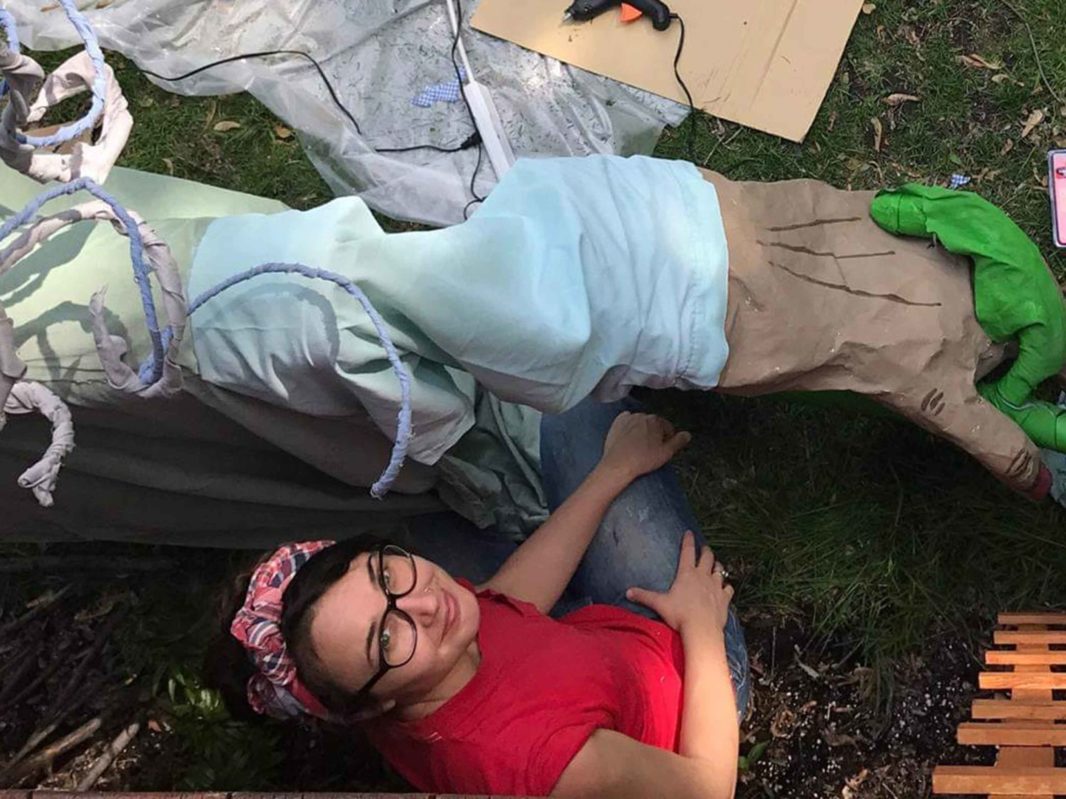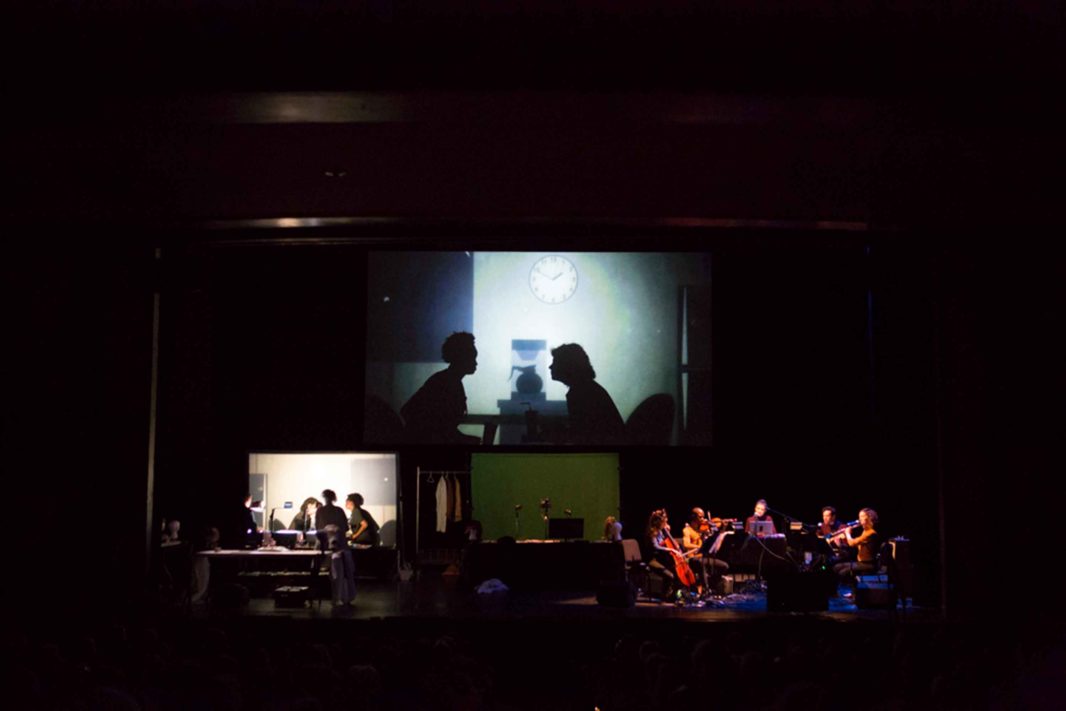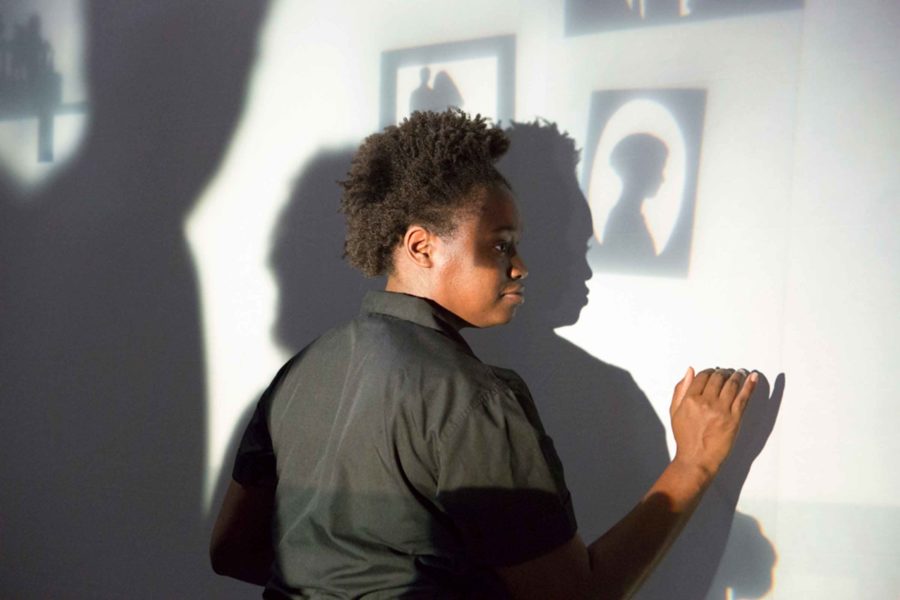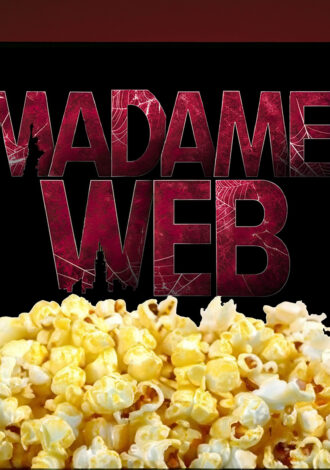Puppet designer Lizi Breit takes it all in stride. In fact, Breit’s journey to Manual Cinema, to the puppet and performance communities in general, has elements of serendipity and variety.
She’s been with wildly popular Chicago theater company Manual Cinema as Artistic Associate and puppet designer since 2011, joining after attending the Art Institute of Chicago. “My major was in printmaking, but I became interested in animation and puppet design,” she says. “I took a puppetry class with Blair Thomas — founder of the Chicago International Puppet Theater Festival — which, to my surprise, had a performative component. I was definitely not a performer before taking that class, but it was a nice, weird happenstance that sort of pushed me into the Chicago puppet community, and I’ve been both designing and performing with puppets ever since.”
Manual Cinema’s “The End of TV— a quest for connection amid the static,” comes to Boston’s Paramount Center courtesy of ArtsEmerson, January 16-27. The show is part puppetry, part electronic imagery, part song-cycle, part sound design, part reflexive cinema, part fast-paced theater. You have to see it to believe it.
The company believes creating narratives about women is an important part of their mission. “The End of TV” follows suit. Its story depicts Flo, an elderly white woman who was once a supervisor at a now defunct auto plant, and Louise, a young black woman who has recently taken a job as a driver for Meals on Wheels. An unlikely relationship grows as Flo, succumbing to dementia, approaches the end of her life, and Louise prepares for the invention of a new one.

Credit: Dan Kerr-Hobert
Manual Cinema puppet designer Lizi Breit does constructive surgery on one of her creations.
Breit is part of the team that invented “The End of TV.” She co-adapted it for the screen and designed the puppets. The production is performed by four puppeteers and five musicians.
As with “The End of TV” there are multi-faceted tasks involved in the creation of any Manual Cinema work. Manual Cinema’s Co-Artistic Directors — there are five, count ‘em five — Drew Dir, Sarah Fornance, Ben Kauffman, Julia VanArsdale Miller and Kyle Vegter each have their own sphere of influence, including screenwriting, directing, music composition, performing, puppeteering, storyboarding and design.
Breit says this hybrid of creativity works because everyone has a role. “Every piece has its own process, with idiosyncratic opportunities and limitations,” she says. “They inform the work as we grapple with its construction, basing the design upon the needs of the narrative.”
Every piece has its own process, with idiosyncratic opportunities and limitations. They inform the work as we grapple with its construction, basing the design upon the needs of the narrative. — Lizi Breit
One can speculate as to the generous nature of these artists, successfully collaborating as they do, allowing their ideas to co-mingle in service of the whole. The visionary, layered accumulation of live performance, visuals, sound and narrative, accounts for the company’s work being so well received, from Australia to Iran to Scotland.

Credit: Judy Sirota Rosenthal
“The End of TV” plays at ArtsEmerson’s Paramount Center, January 16-27.
Storytelling is always at the company’s starting point, with the various elements created in different order depending on “who comes up with the story idea,” says Breit. Manual Cinema usually makes work without using spoken word, starting with visuals and next collaborating with the sound and music team. But, “The End of TV” came into being in a new way, initiated by music and lyrics. The ensemble creates the ingredients that will tell the story, not in real time, but in order to satisfy the theatrical demands, building on what excites them and answering questions the process reveals. Breit laughs in describing how they then work backwards, figuring out a way to perform the story, with all of its technically intricate components, in real time. It ain’t easy.
The adage “everything old is new again” certainly seems on point with “The End of TV.” Consider Dziga Vertov’s experimental 1929 silent film “Man with a Movie Camera.” It is one of the first examples of reflexive cinema. If one accounts for a century of advancement in technical and performance art techniques, from then until now, “The End of TV,” as it makes the audience aware of the creative process, is reflexive theater and cinema in the age of the millennials.
The New York Times’ Ben Brantley said in a 2015 Critics Pick, “Welcome to a brave new sensibility that’s corny and cutting-edge, backward and forward looking, at the same time.”
Indeed.
“The End of TV” by Manual Cinema
ArtsEmerson
Jan. 16-27
Emerson Paramount Center, 559 Washington St, Boston
$10-$80
617-824-8400



 3 min read
3 min read






